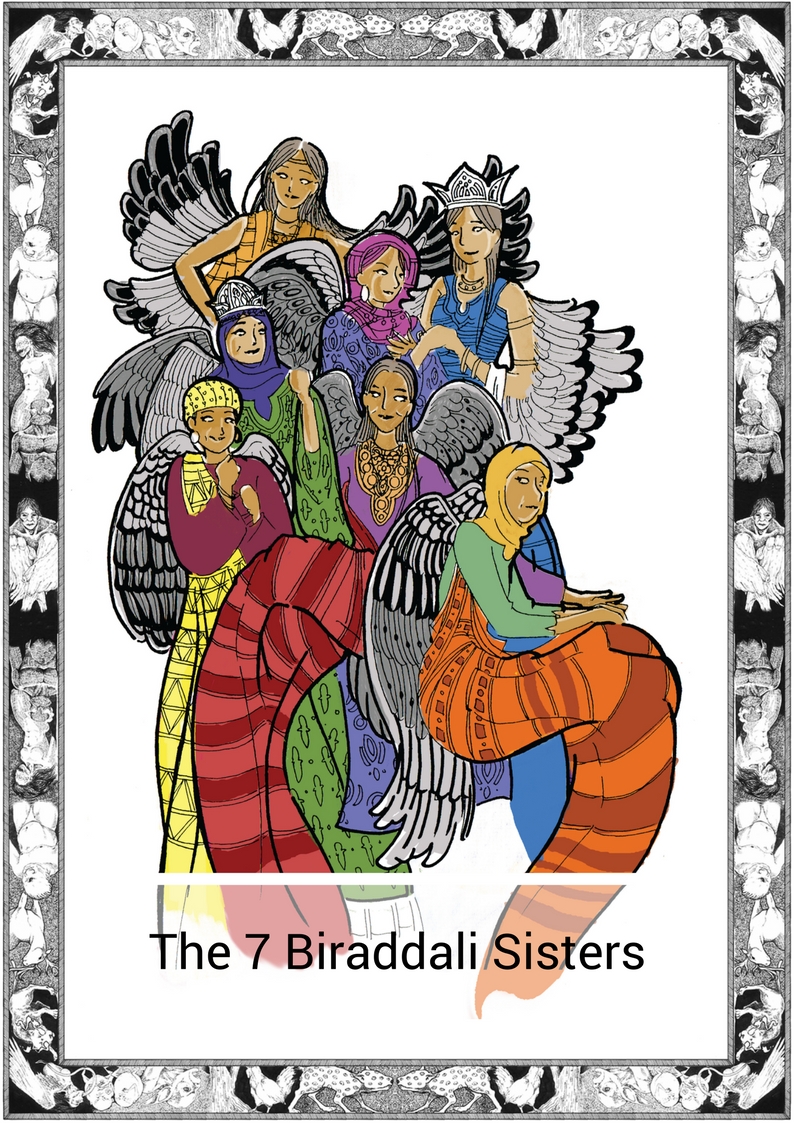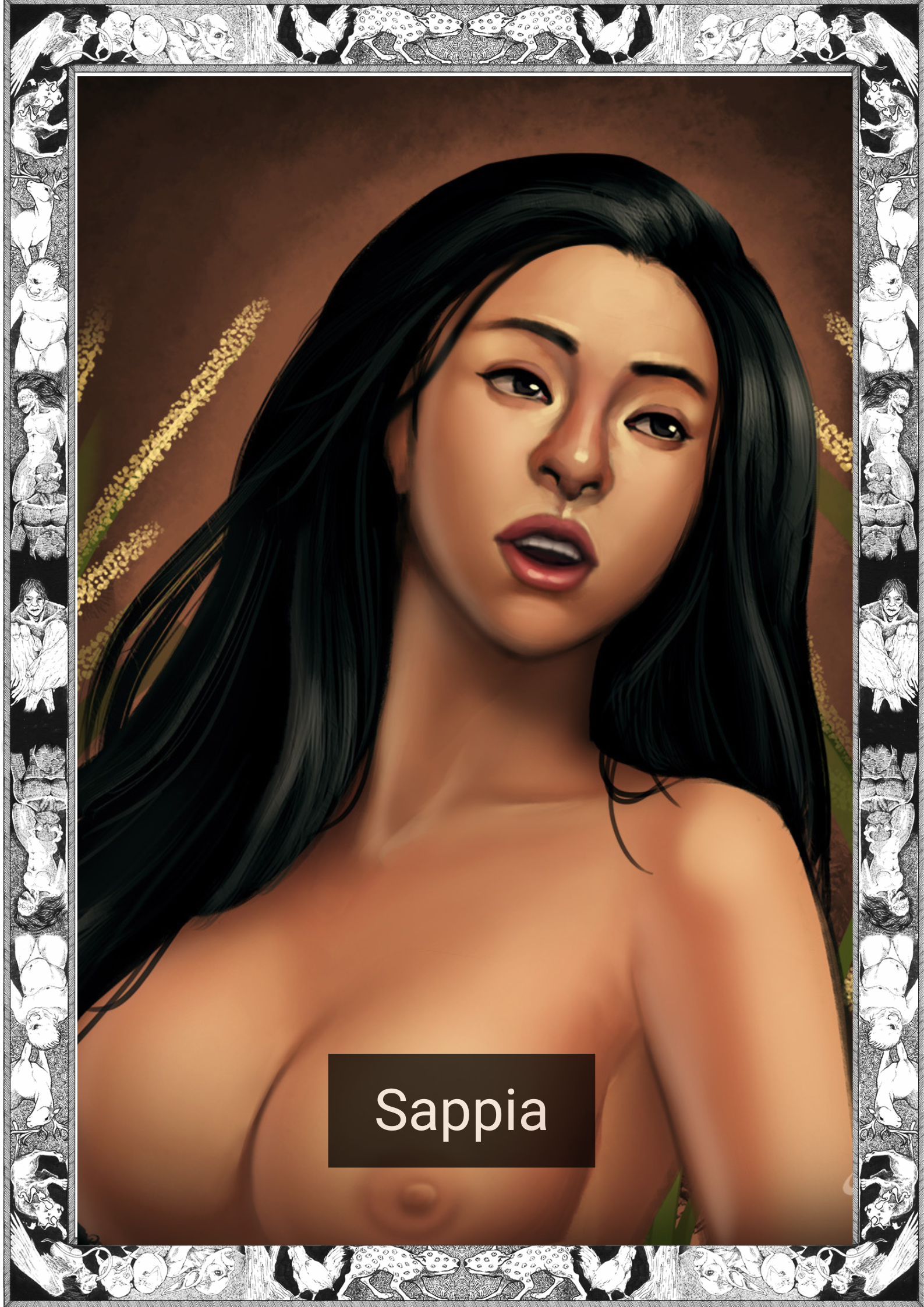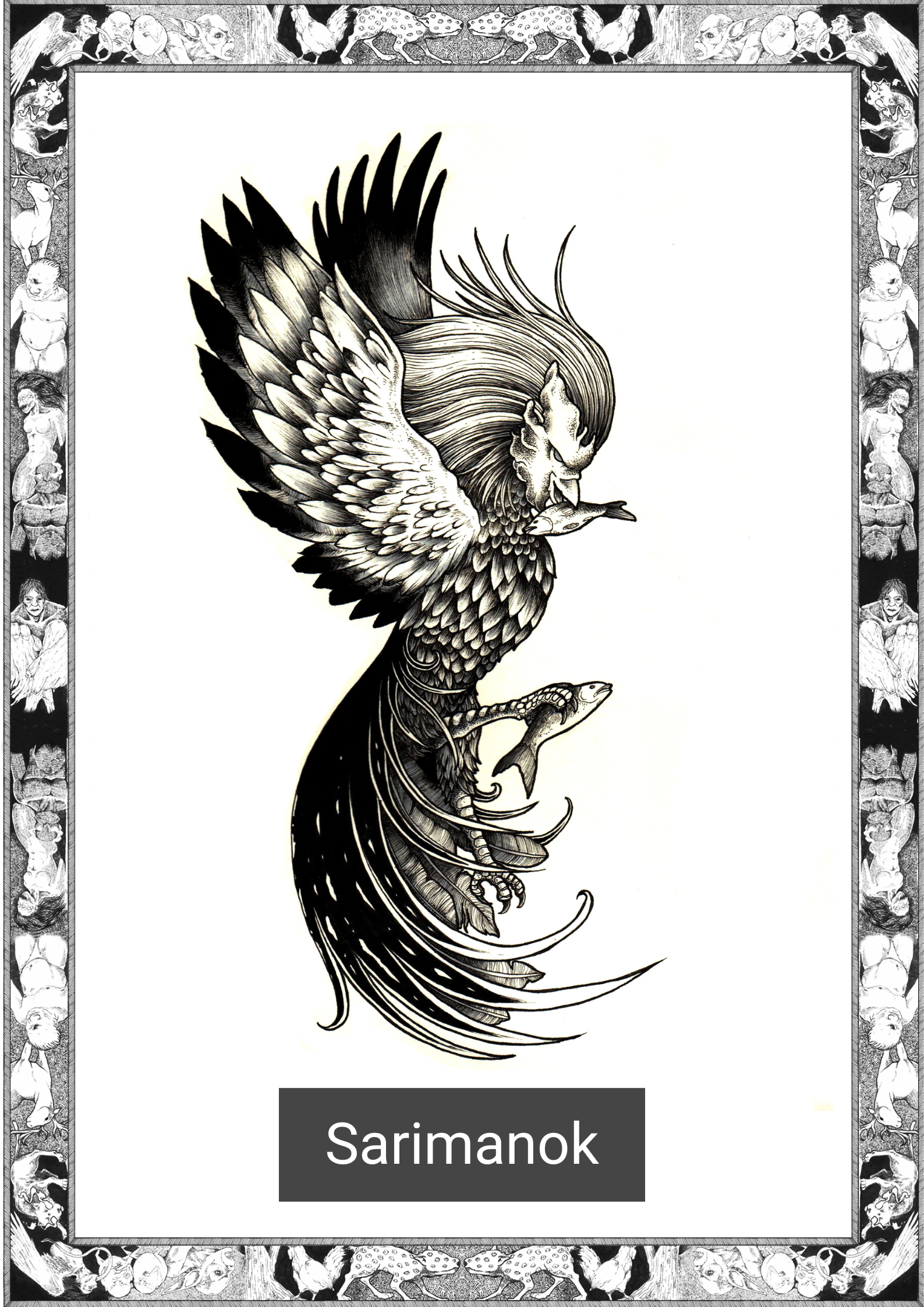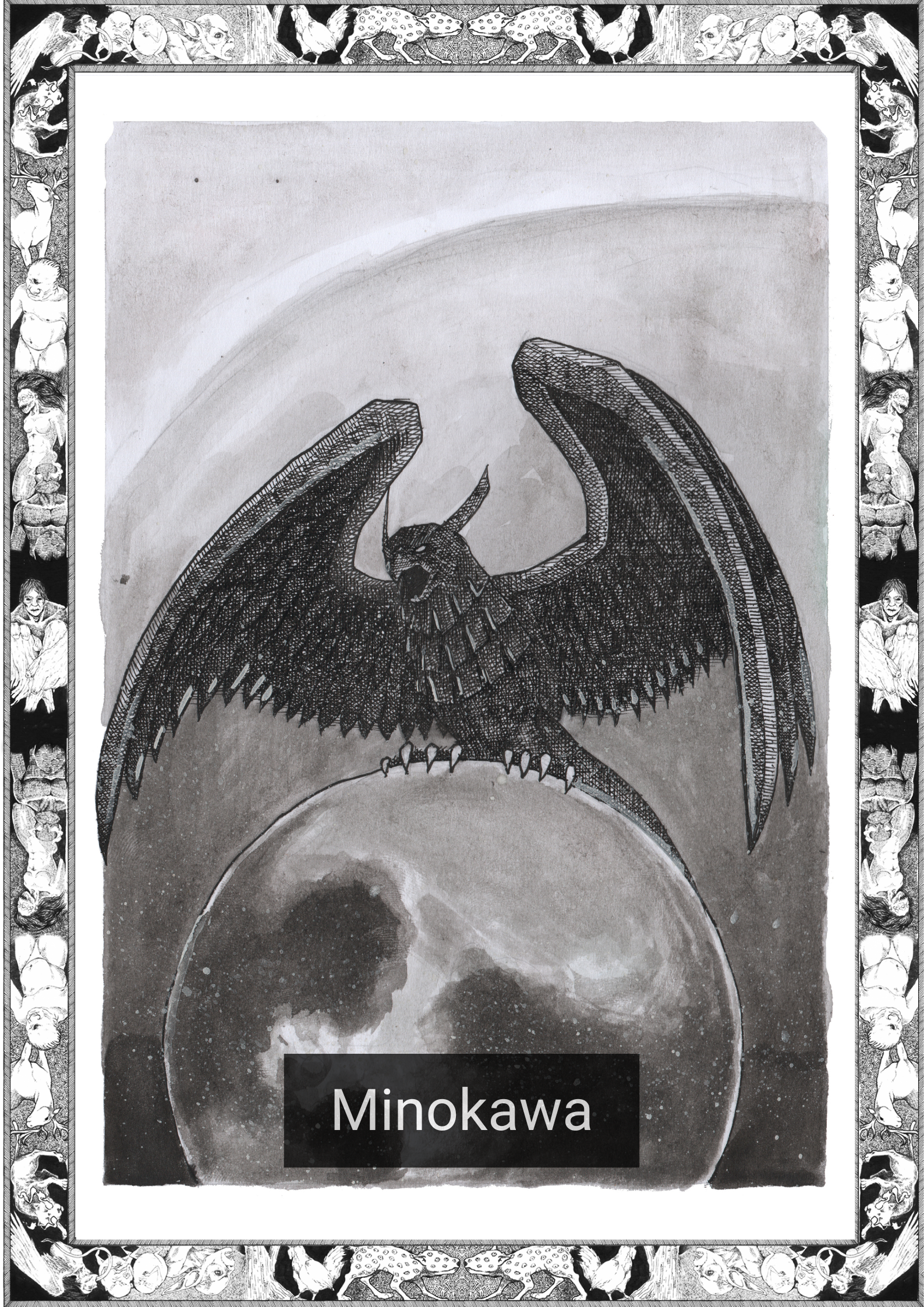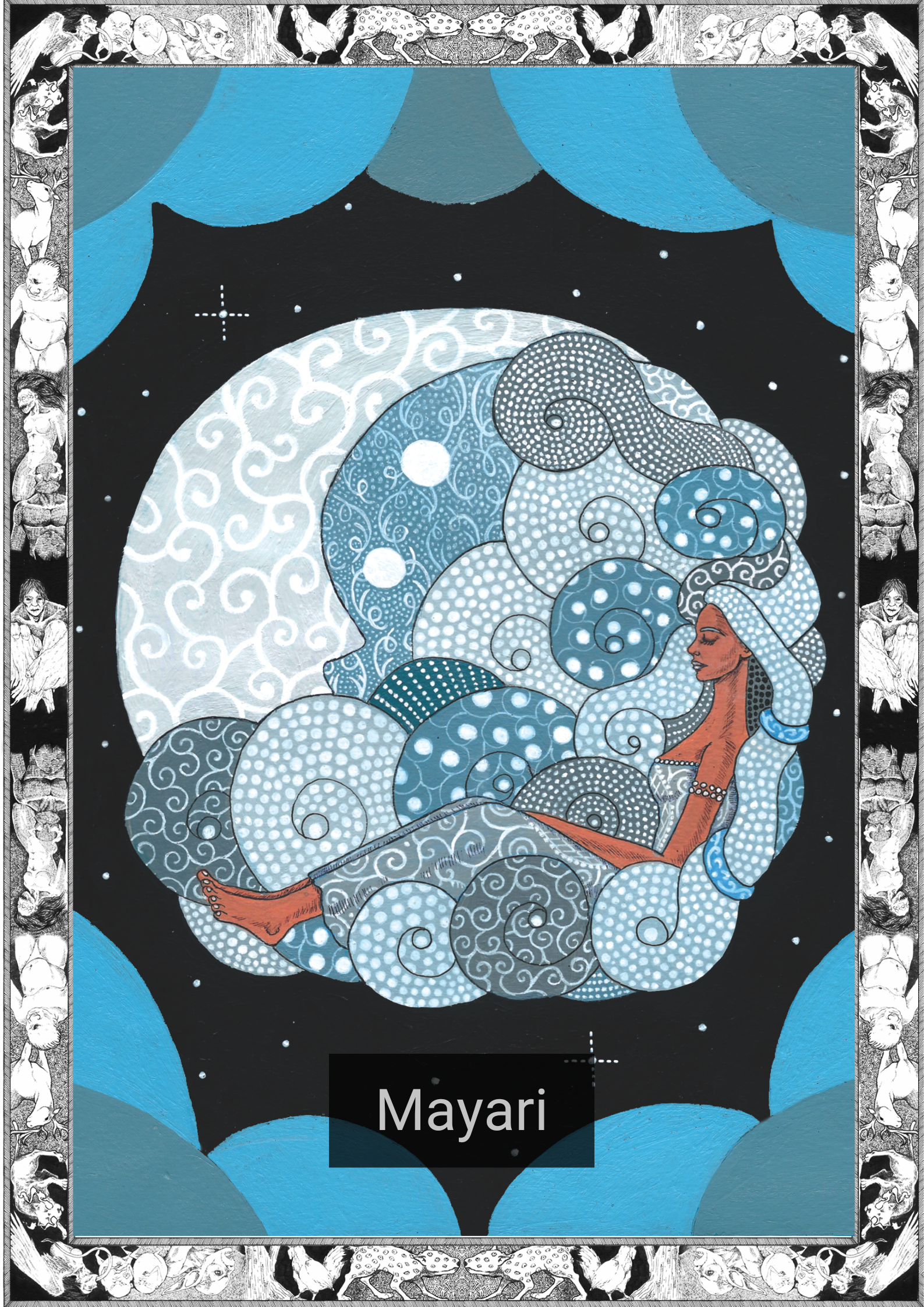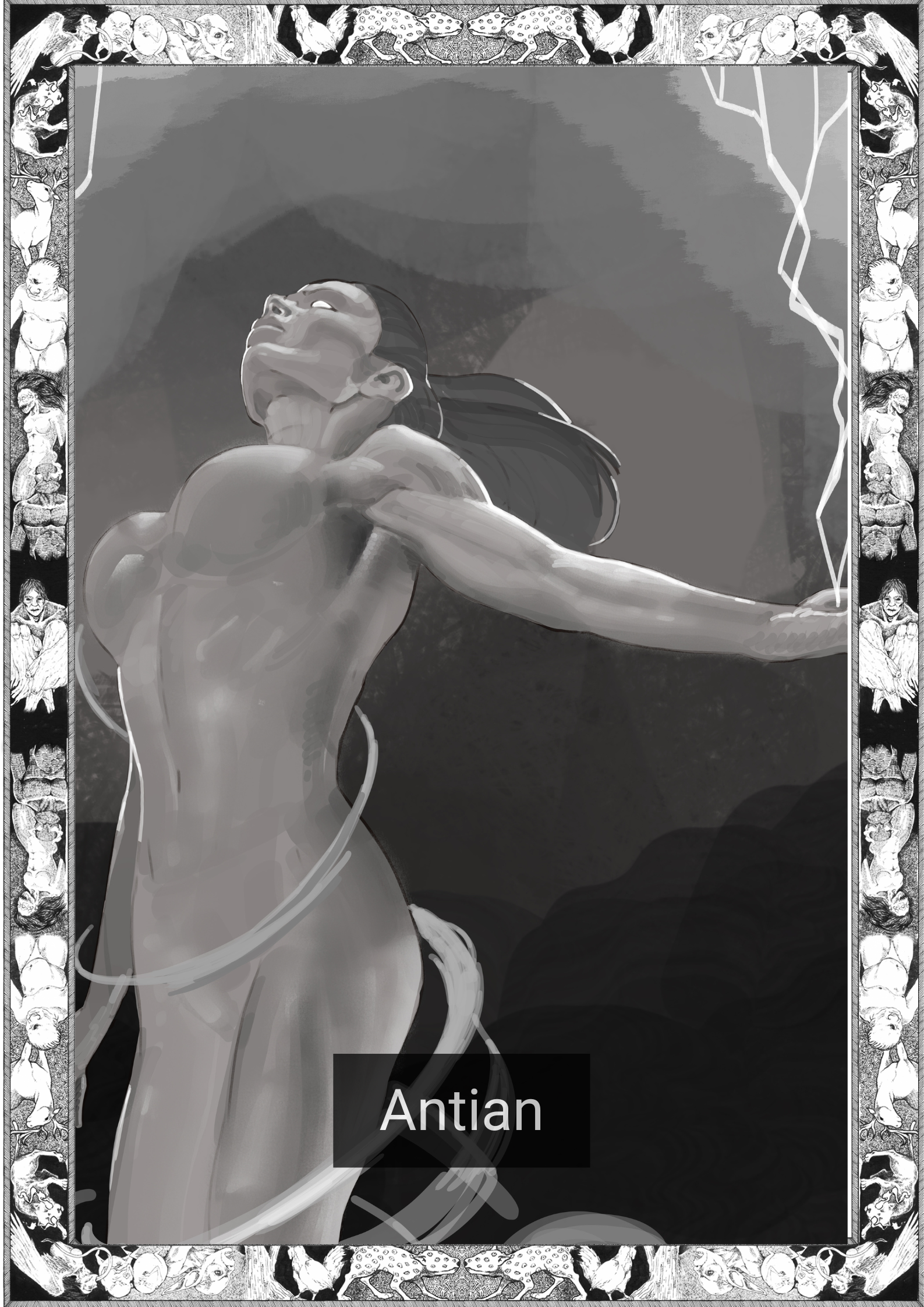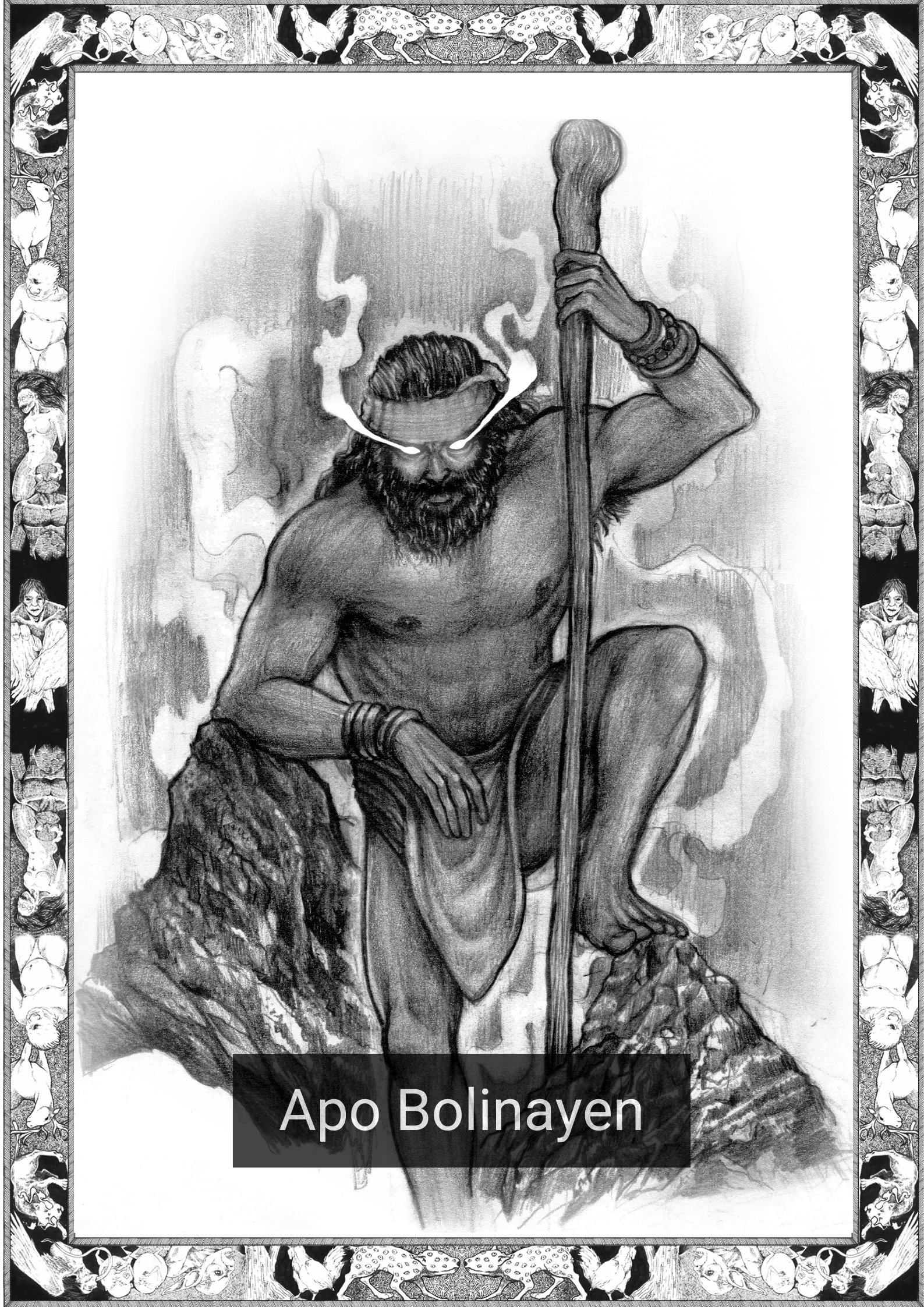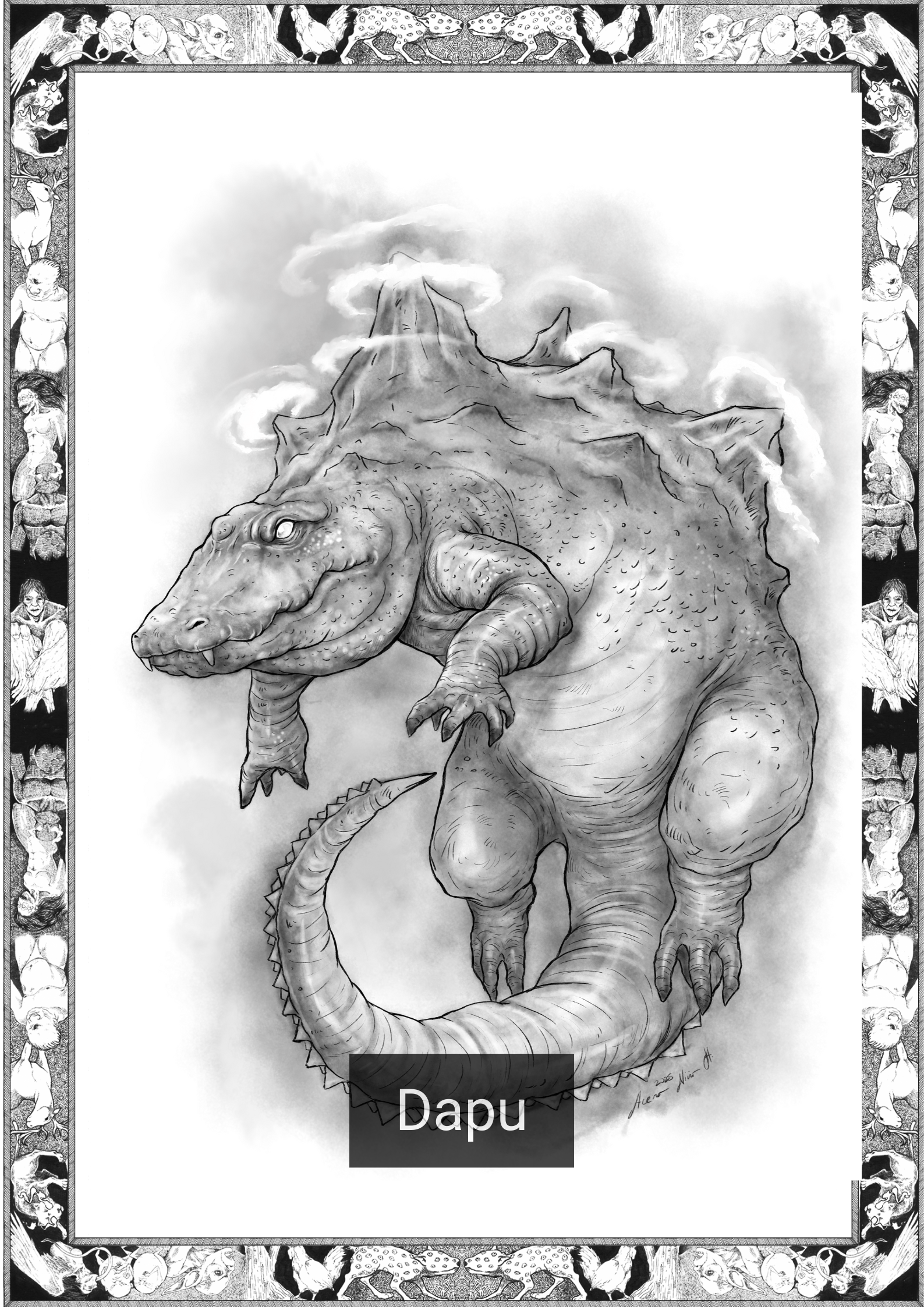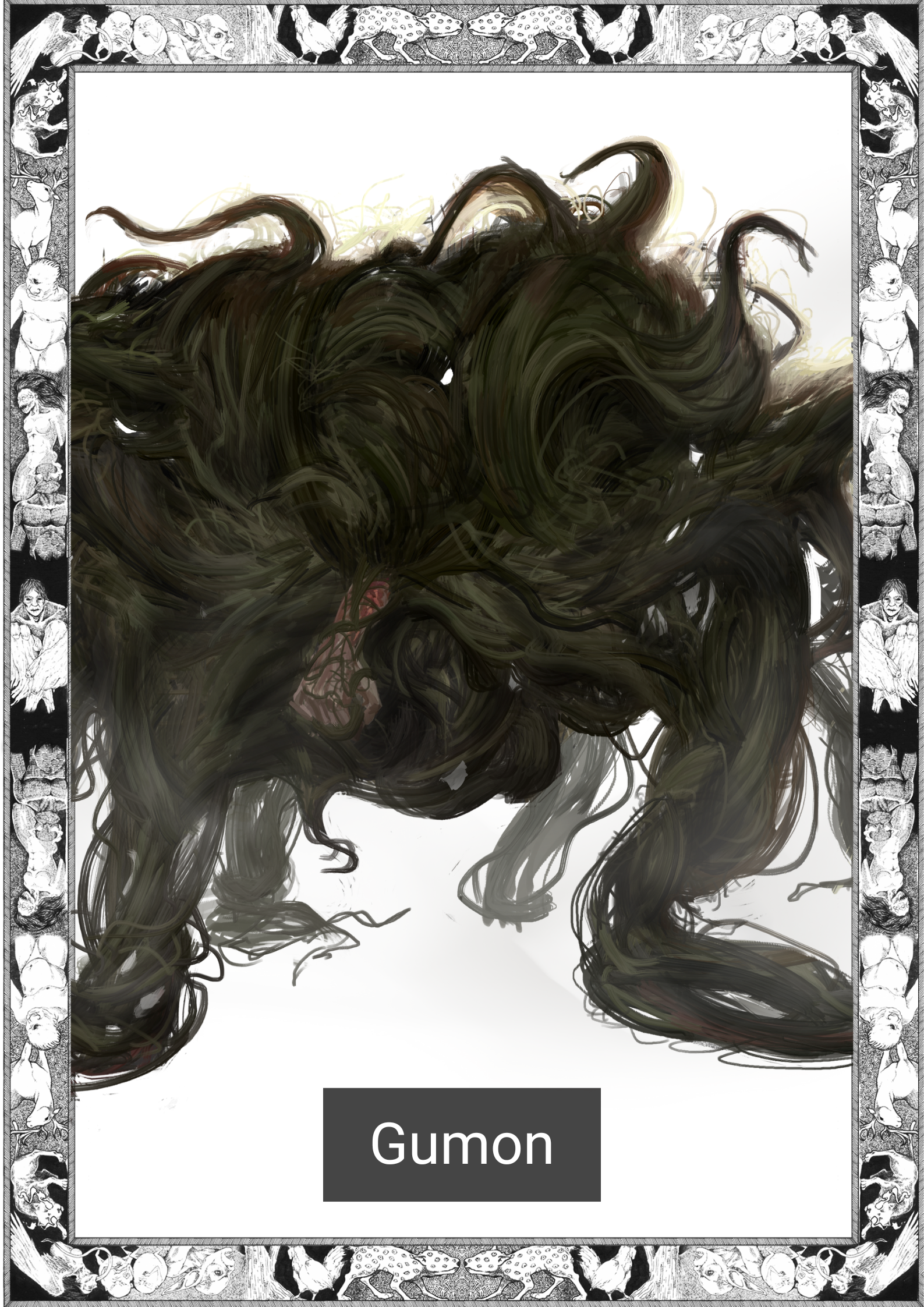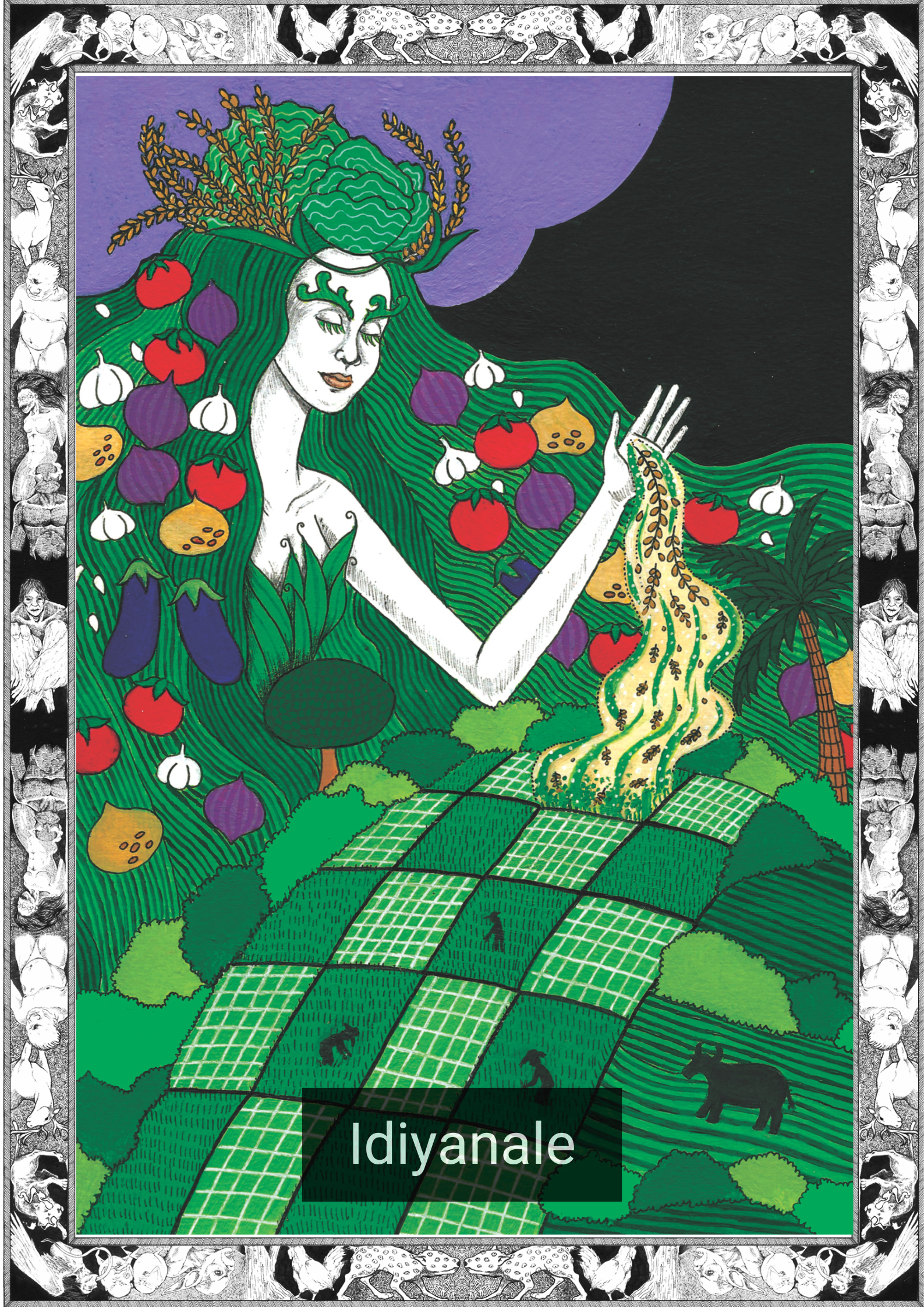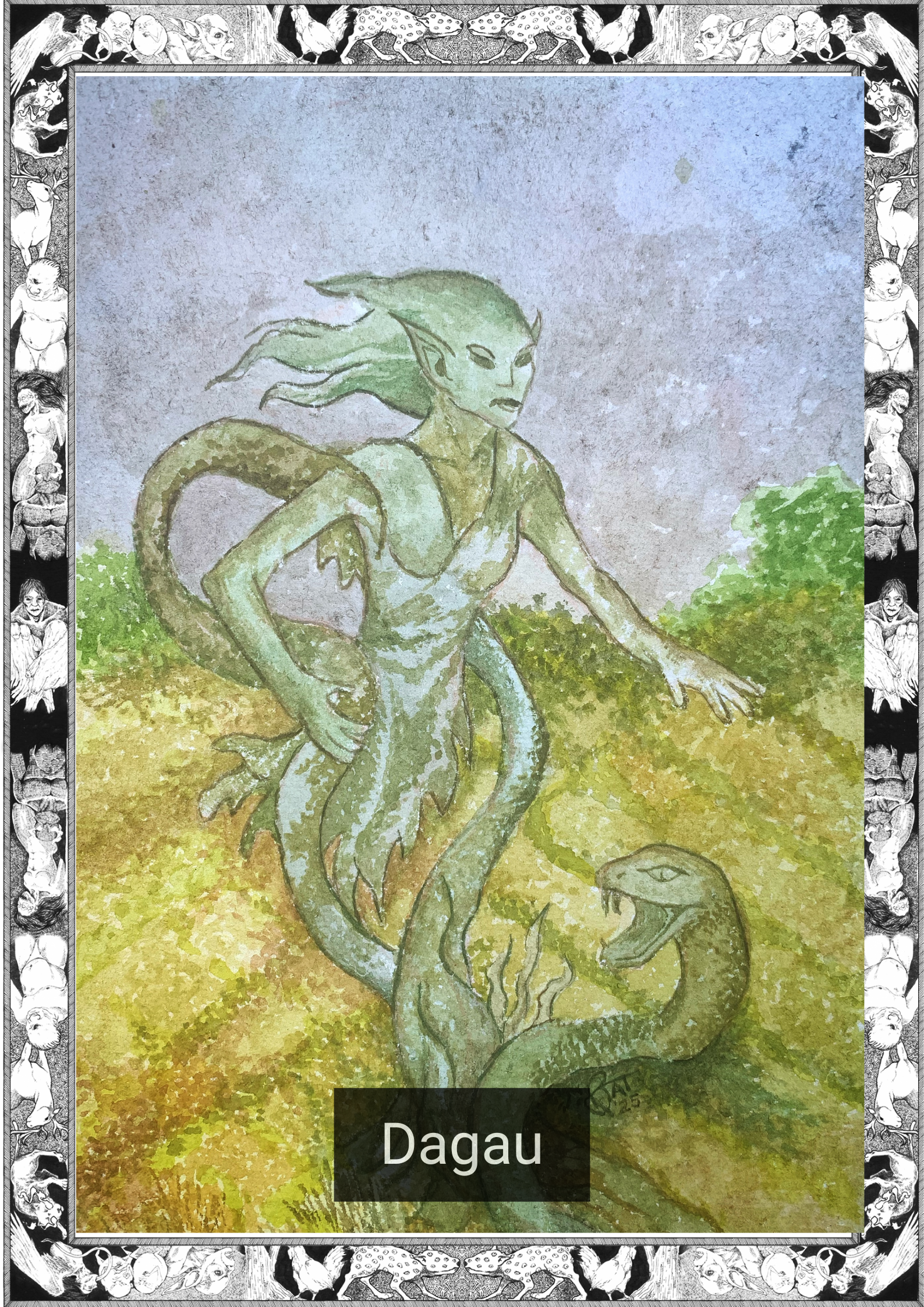
*Note this story is in Cebuano
Abi sa tanan istorya-istorya ra sa kalibotan ang mahitungod sa biraddali. Mabinantayon ra gyud mi aron dili makit-an. Apan sa usa ka higayon, naay usa sa amoa ang wala nagbantay. Kaming pito nga mag-igsoon gidala ang bangaw sa kalibotan unya gihubo amoang plata’ng pako aron makapagpahulay ug maligo sa preskong tubod sa bukid.
Usa ka adlaw, nakita sa usa ka tawo amoang pako sa yuta ug gihadlok mi na himuong iyang asawa. Kaming unom nga magulang sa mag-igsoon utokan na maong gitak-op na namo amoang pako pagduol niya. Pagkahuman, gisul-ob amoang pako ug nilupad sa langit. Layo ang gitaguan sa pako sa kinamanghuran ug nakawat kini sa tawo.
Ang biraddali dili motalaw. Nahimong bitin ang kinamanghuran. Nidakin-as siya apan mangangayam ang lalaki ug nabitik ang bitin sa hawla. Sunod nahimong banayaw ang kinamanghuran. Nagtago siya sa yuta sa lasang apan tin-aw ang panan-aw sa lalaki maong nakita siyang nagkapakapa. Nahimong aluhipan ang kinamanghuran. Nisaka siya sa mga sanga sa kahoy aron makaikyas apan paspas ang lalaki. Nasakpan ang aluhipan sa sanga. Sa kataposan, wala na’y mabuhat ang kinamanghuran. Kung wala ang pako sa biraddali mapus-aw ilahang gahom.
Ang kinamanghuran sanong na maasawa sa lalaki ug nipuyo siya kauban sa lalaki. Naghulat siya sa adlaw na makuha niya og balik iyang plata’ng pako aron makalupad sa bangaw padulong sa langit. Kaming iyang mga igsoon dili motugot na mabilin ang kinamanghuran sa kalibotan kauban sa lalaki.
Dili namo irisgo na masikop amoang pako sa lalaki. Mata’g usa sa amoa nahadlok na maputol amoang pako maong gidala namo ang amoang hunghong sa hangin. Nanghinaot na ang usa moabot sa amoang natanggong na igsoon.
Nihunghong mi sa lasang ug sa mga kahoy. Giingon namo na gilubong sa lalaki iyang plata’ng pako sa ilalom sa kahoy tapad sa suba. Nihunghong mi sa kagawasan ug paglaum. Nihunghong mi na gimingaw mi sa iya.
Ug usa ka adlaw, nadungog mi. Ang kinamanghuran niikyas sa balay sa lalaki samtang wala kini ug nikabad siya padulong sa lasang. Wala na’y mas paspas pa na biraddali ug wala pa’y anghel na mas nakasabot sa kahulogan sa kagawasan.
Huna-huna sa tanan istorya-istorya ra ang biraddali kay kabalo mi sa kamangtas sa tawo. Dili na makawat ang amoang mga pako. Dili na mahibaloan sa isa sa amoa ang kahadlok na matanggong sa kalibotan. Dili na mahibaloan sa tanan ang kaalaotan sa amoang pagkadili kompleto.
Magpabilin mi’ng istorya-istorya lang sa katawhan ug sa kaanyag sa bangaw. Karon ug sa kahangtoran.
=——————————=
English Version
Everyone thinks the biraddali are myths on earth, we’re just too careful to let ourselves be seen. Except for one occasion, one time when one of us let our guard down. You see, us seven sisters take the rainbow down to earth to remove our silver wings and relax and bathe in the fresh mountain springs.
One day, a human saw our wings on the ground and threatened to make us his wives. We eldest sixsisters were wise enough to keep our wings close and when he got near, we put on our wings and flew back to the heavens. But the youngest sister kept her wings further away and the man stole them from her.
A biraddali will not back down. The youngest sister changed into a snake at first, slithering away, but the man was a hunter and trapped the snake in a cage. The youngest then changed into a scorpion and hid amongst the forest floor, but the man’s vision was great, so he saw her scuttling away. The youngest then changed into a centipede, going up the tree branches to escape his advances, but the man was quick, he stopped the centipede at a branch. Finally, the youngest had no choice, without her wings the biraddali’s power was fading.
The youngest acquiesced to being the man’s wife, and she stayed with him, waiting for the day she could get her silver wings and fly back on the rainbow towards the heavens. We elder sisters would not let the youngest remain on earth with the man.
We did not want to risk getting captured by the man ourselves, and each one of us was scared of getting our wings clipped, so we carried our whispers on the winds, hoping that one would reach our trapped sister.
We whispered of the forest and of the trees, telling her that the man buried her silver wings under a tree beside the river. We whispered of freedom and hope. We whispered that we missed her.
And one day, we were heard. The youngest sister escaped the man’s house while he was away and dashed towards the forest. Never had there been a swifter biraddali, and never had any angel knew what freedom had meant.
Everyone will think the biraddali are myths, for we know the cruelty that man can possess. Our wings will never be taken from us. Never again will one of us know the fear of being shackled to the earth. Never again will the rest know the misery of knowing that we are not complete.
We will remain alive in the myths of men and in the beauty of the rainbow. For now, and forever.
————————–————————–———————–
*The Cebuano language, alternatively called Cebuan and also often colloquially albeit informally referred to by most of its speakers simply as Bisaya (“Visayan”, not to be confused with other Visayan languages nor Brunei Bisaya language), is an Austronesian regional language spoken in the Philippines by about 21 million people, mostly in Central Visayas, western parts of Eastern Visayas and most parts of Mindanao, most of whom belong to various Visayan ethnolingusitic groups, mainly the Cebuanos. It is the by far the most widely spoken of the Visayan languages, which are in turn part of wider the Philippine languages. The reference to the language as Bisaya is not encouraged anymore by linguists due to the many languages within the Visayan language group that may be confused with the term.
Written by Karl Gaverza
Cebuano Translation by Sarah Masiba
Copyright © Karl Gaverza
Translation Copyright © Sarah Masiba
Inspired by “The Seven Angels.” in Sulu Studies 2. Rixhon ed. 1973.
The Seven Biraddali Sisters Illustration and Colors by Elise Mendoza.
